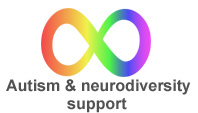The Carpentry of Grief: Supporting Clients to Re-build After Loss
This article was first published in NALAG News, the National Association of Loss and Grief NSW‘s publication, May 2011.
.
As therapists, we often work with metaphors – our clients’ and our own. Even therapy, itself, is frequently framed in metaphoric terms. So we’re encouraged to dip into our therapeutic ‘toolbox’ and draw out something useful to work with.
In grief work, these tools encompass the myriad theories of bereavement and loss. You probably know them only too well:
- Kübler-Ross’ stages
- Worden’s tasks
- Rando’s perspectives
- Klass, Silverman and Nickman’s continuing bonds
- Stroebe and Schutt’s dual process
- The McKissocks’ use of chaos theory
- The concepts of ‘masculine’ and ‘feminine’ grieving
- Even the “Seasons for Growth” program which NALAG uses (Graham & Anderson 2002)
- And countless others.
As a toolbox, it’s full to bursting. And somewhere alongside all those tools, perhaps at the bottom of the box, lurks the DSM IV, like a kind of instruction manual outlining how things ‘should’ be built and all the ways they can ‘go wrong’. (For example, it posits that if many of the common signs of grieving persist for longer than only two months after bereavement, then they are no longer merely about grief, but have become a “major depressive episode” (APA 2000, p.356)).
So, as practitioners, we have lots to work with.
And perhaps therein lies a certain danger… For the temptation can be to assume that a very specific kind of work ‘needs’ to be done (and, that having worked like this before, we will know roughly what shape it ‘should’ take).
Or perhaps we’re tempted to overlook the limitations of our theories and modalities. To forget their flaws. To pick up these tools automatically, because they’re the things we know and they’ve grown comfortable in our hands. However, the common analogy of the therapeutic toolbox inadvertently lends these theories a certain solidity, a sense of unquestioned usefulness, which actually belies their own mortality and transience.
For theories tend to shift and change over time. In fact, they already have. For instance, Bowlby initially cast grieving as a “dysfunctional” biological response to attempt to strengthen a bond with an attachment figure that no longer exists (1969, 1973, 1980, cited in Payne et al. 1999, p.61). Collectively, we seem to have moved on from that idea, embracing grieving as a more-or-less ‘healthy’ response. Similarly, the parameters of what was previously labelled “complicated grief” may be evolving, too – into the more forgiving notion of ‘continuing grief’ or “prolonged grief” (again, normalising what was previously pathologised) (Goldsmith et al 2008, cited in Worden 2009). So our theories, our tools, aren’t static. They’re not solid. And to forget this, or to see our current models of grief as perpetual or reliable or ubiquitously applicable, seems like folly.
Instead, perhaps we could take Heraclitus’ lead and more consciously remember that we ‘cannot step twice into the same river’ of pain. That what applies to one grief – or one grieving person – may not apply at all to another. That whatever yardstick or measuring tape we might like to pull from our toolbox, perhaps at some fundamental level no loss can actually be compared to another in this way. That each grief, in some respects, is the first grief.
Or perhaps we could even go as far as Yalom suggests, to ‘down tools’ altogether, as it were, and “…strive to create a new therapy for each [client]” (2003, p.34). Seeing the particularity of each person’s loss like this, rather than just the more generic ways we’ve grown used to framing them, might help us to truly ‘meet each client where they’re at’ in a more person-centred way. This seems vital, for of course we meet our clients not only as a therapist (with the limited, transient tools of our trade), but also as a person (with our own very intimate strengths and vulnerabilities).
Remembering all of this, then, perhaps we can start to broaden the normative nature of the tools at our disposal. To prevent them from prescribing what grief will look like. And perhaps, then, we can invite our clients to find release from the expectations of living out some preordained ‘script of grief’. To simply feel what they are feeling. To live what they are living.
For, already, there are often so many pressures brought to bear on the person in grief: expectations of society, of family, of friends, of workplaces. I personally discovered how many ‘rules’ there are to grieving when my late husband died over a decade ago (which I’m including here in light of feminist therapy, which encourages the telling of our own personal stories alongside so-called ‘expert,’ and often patriarchal, views (Corey 2005, p.351)).
I very quickly discovered there must be a ‘right way’ to grieve, as I seemed so adept at getting it ‘wrong’. People weren’t shy about telling me this. Seemingly everyone, from my dentist to my friends (even my gynaecologist weighed-in on the subject), suggested I shouldn’t be reacting the way that I was. That I should somehow be different. That I should be more emotional; or less. That I should keep myself busy; that I was doing too much. That I should be ‘over it’ by now; but definitely not over it enough to find love again. The list of rules seemed infinite.
So, as therapists, do we inadvertently add to this list? Do we subtly give messages that our models, our theories, our tools offer the ‘right’ way to grieve? Do we impose yet more pressure to conform to our way of seeing things?
I believe these are important questions to ask. For the thing about tools is that they itch to be used. They’re not always so keen to stay in the box and rust over. They have a kind of kinetic energy about them that wants action.
But the tools are not the project.
Our models are not the project.
The project, for now, is grief. It is sorrow. It is each person, each client, facing their life anew. Coming to terms with a universe that is irreparably altered. Coming to lose the whole world as they knew it.
Whatever they might have been building in their lives beforehand, it is dashed. Splintered. Changed. There could be great chunks missing. Or extra bits that seem not to fit anywhere.
We might be handy with a spanner, and therefore tempted to reach for it; but there may actually be no call for it at all.
So perhaps sometimes, as therapists, the most useful thing we can do with our tools – our theories, our models, our understandings of ‘normal’ grief – might be to just leave them in the box. To simply sit beside our client in the wreckage for a while. To slowly help them gather up what’s meaningful. And, when they’re ready to dream again (to build again), to take our lead from their sketches. To support them, first, in building their own unique theory of grief. And then in re-building their life.
.
Text copyright Gabrielle Gawne-Kelnar, 2011.
.
Gabrielle Gawne-Kelnar (Grad Dip Counselling & Psychotherapy) is a writer, blogger and Sydney psychotherapist in private practice at One Life Counselling & Psychotherapy. Gabrielle also facilitates telephone support groups for people who are living with cancer, for their carers, and for people who have been bereaved through a cancer experience. She was the former editor of a journal on counselling and psychotherapy and she provides regular therapeutic updates on facebook and Twitter @OneLifeTherapy.
.
References
-
APA (American Psychiatric Association) (2000) Diagnostic and Statistical Manual of Mental Disorders (4th Edn, Text Revision). American Psychiatric Association: Washington, DC.
-
Graham, AP and Anderson S (2002) Seasons for Growth Companion Manual: Levels 1-3, Mary MacKillop Foundation, North Sydney, NSW.
-
Payne, S., Horn, S. and Relf, M. (1999) Loss and Berevement. Open University Press, Buckingham.
-
Yalom, ID (2003) The Gift of Therapy: An Open Letter to a New Generation of Therapists and Their Patients, Harper Perennial, New York.
-
Worden, JW (2009) Grief Counseling and Grief Therapy: A Handbook for the Mental Health Professional, Springer Publishing Company


